Lip Balm Beeswax Coconut Oil: The Natural Solution for Soft Lips
Lip balm is an essential item for maintaining lip health, especially in varying climates. We recognize the importance of natural ingredients, with beeswax and coconut oil standing out in the realm of lip care. These ingredients are prized for their moisturizing properties and their gentle effect on sensitive skin.
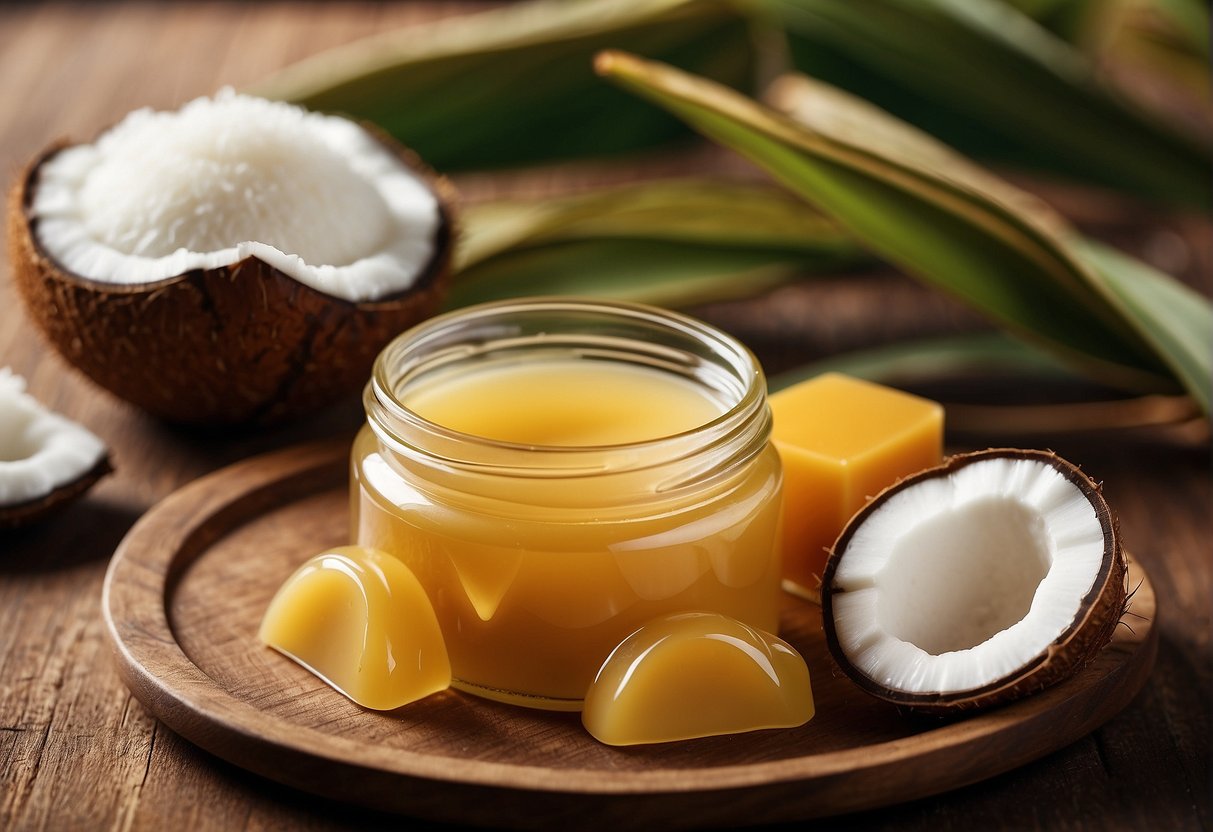
Beeswax acts as an emollient and a natural barrier, protecting the lips from environmental factors while coconut oil provides deep hydration due to its fatty acid content. Together, they form a potent combination that not only soothes dry lips but also nourishes them.
Crafting lip balm using beeswax and coconut oil allows us to tailor products according to personal preferences or needs. While creating these balms, we focus on quality and simplicity, ensuring that the final product both effectively cares for the lips and delights the senses.
Key Takeaways
- Beeswax and coconut oil are beneficial for lip health.
- Homemade lip balm can be customized for personal care.
- Quality and simplicity are crucial in lip balm formulation.
Benefits of Beeswax and Coconut Oil in Lip Care
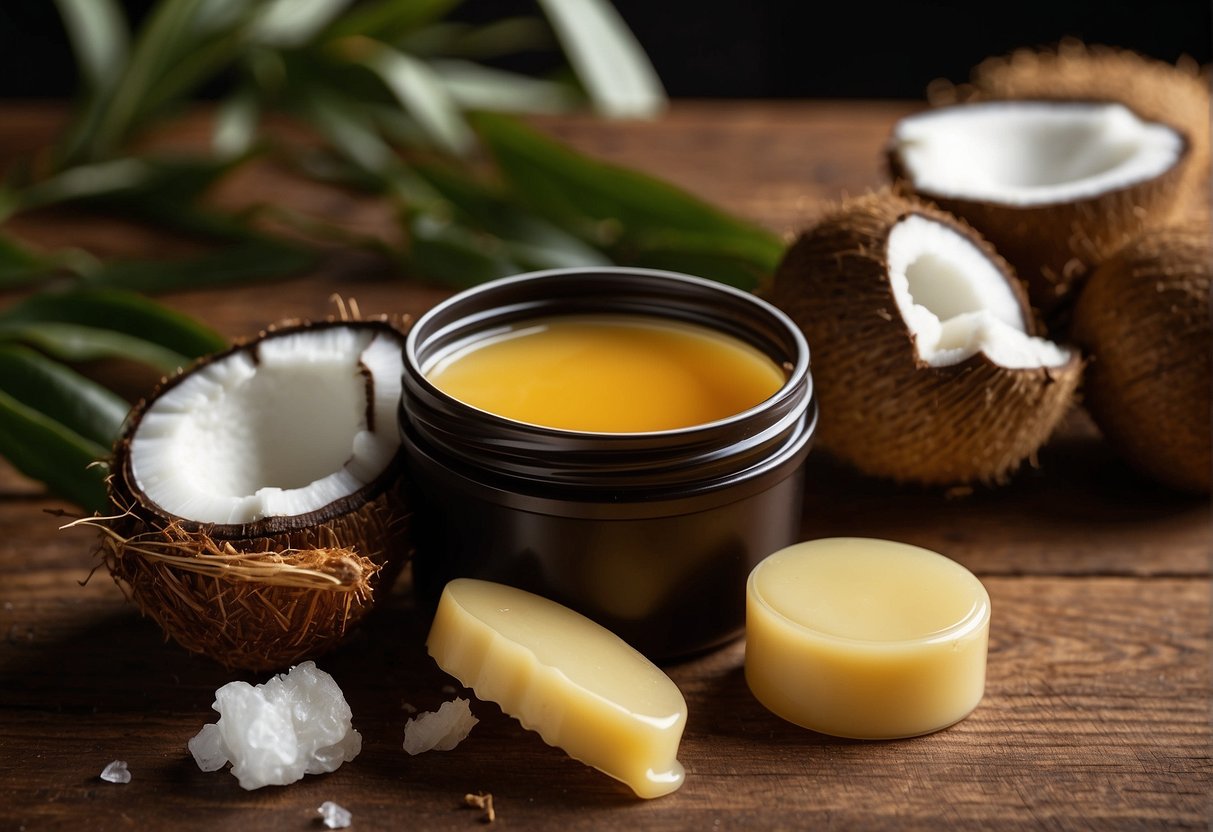
In our exploration of natural lip care, we cannot overlook the efficacy of beeswax and coconut oil. Their synergistic effect ensures lips stay hydrated and protected, while offering multiple health benefits due to their natural composition.
Hydration and Protection
Beeswax serves as a protective barrier, sealing moisture into the skin without clogging pores. We find it particularly effective for preventing dry and chapped lips, as it locks in hydration and shields the skin from harsh environmental elements. Coconut oil, rich in fatty acids, compliments beeswax by providing an added layer of moisture, keeping lips supple and nourished.
Natural Ingredients and Health Benefits
The combination of beeswax and coconut oil in lip care is ideal for those with sensitive skin due to the natural origin of these ingredients. Beeswax is enriched with Vitamin A and provides anti-inflammatory properties, which promotes healing. Meanwhile, coconut oil is a source of Vitamin E, an antioxidant that helps to soothe and repair the skin. Together, these natural ingredients create a lip balm that not only moisturizes but also supplies lips with essential vitamins for overall health.
DIY Lip Balm Crafting Basics
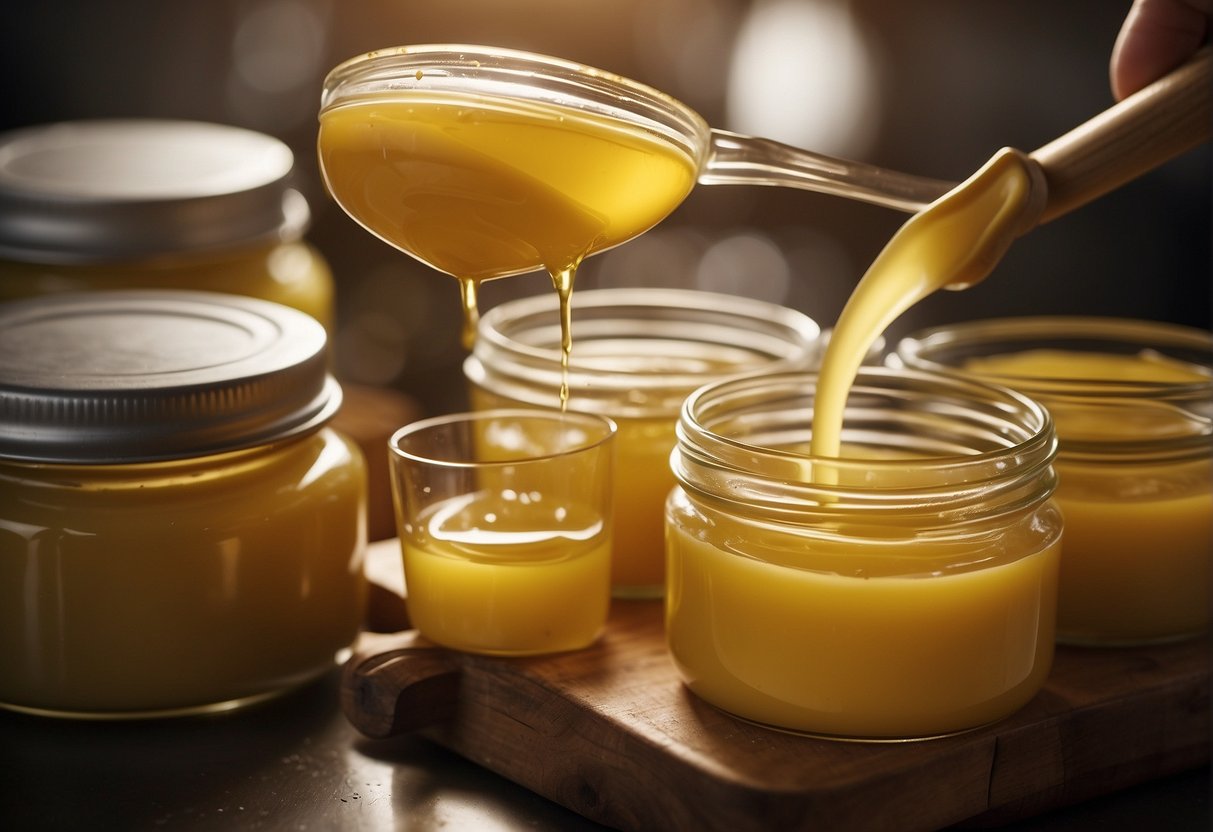
Crafting your own lip balm is a rewarding process that allows us to customize flavors, scents, and the moisturizing qualities we desire. Below, we'll guide you through the essential ingredients, equipment, and safety tips to create your very own homemade lip balm.
Required Ingredients
To start with our DIY recipe for lip balm, we need the following base ingredients, which are crucial for creating a smooth and nourishing product:
-
Beeswax: Acts as a thickening agent and helps to solidify the balm.
- Beeswax pellets are preferable for easy melting.
- Coconut Oil: Provides moisturizing benefits to the lips.
- Shea Butter or Cocoa Butter: Both add a creamy texture and are excellent for skin health.
-
Carrier Oil:
- Options include sweet almond oil or olive oil, which carry essential oils well and offer additional moisturizing properties.
-
Essential Oils: For aroma and potential therapeutic properties.
- Examples are peppermint or lavender for a calming effect.
- Honey: Optional for its natural healing and sweetening properties.
Remember to choose ingredients that suit your skin type and preferences.
Essential Equipment
For the preparation of our homemade lip balm, we'll need:
-
Double Boiler: Preferable for gently melting the beeswax and butters.
- Alternatively, use a microwave in short bursts to avoid overheating.
- Lip Balm Tubes or Containers: To pour the mixture into for solidification and application.
- Stirring Tool: Such as a spatula or spoon for mixing the ingredients.
- Measuring Tools: To accurately measure the ingredients, ensuring the correct ratios for consistency.
It's essential that all equipment is clean to prevent contamination.
Safety and Preparation Tips
Before we start, let's go over some safety and preparation tips to ensure a successful and safe lip balm making experience:
- Avoid Water: Ensure no water enters the lip balm mixture as it can spoil the product and shorten the shelf life.
- Test Essential Oils: Conduct a patch test to prevent potential allergic reactions when using essential oils.
- Safe Melting: Always melt components like beeswax slowly and carefully to prevent burns.
Moreover, prepare your workspace by lining it with wax paper for easy clean-up and organize your ingredients and tools before starting the process.
Making Your Own Lip Balm Recipes
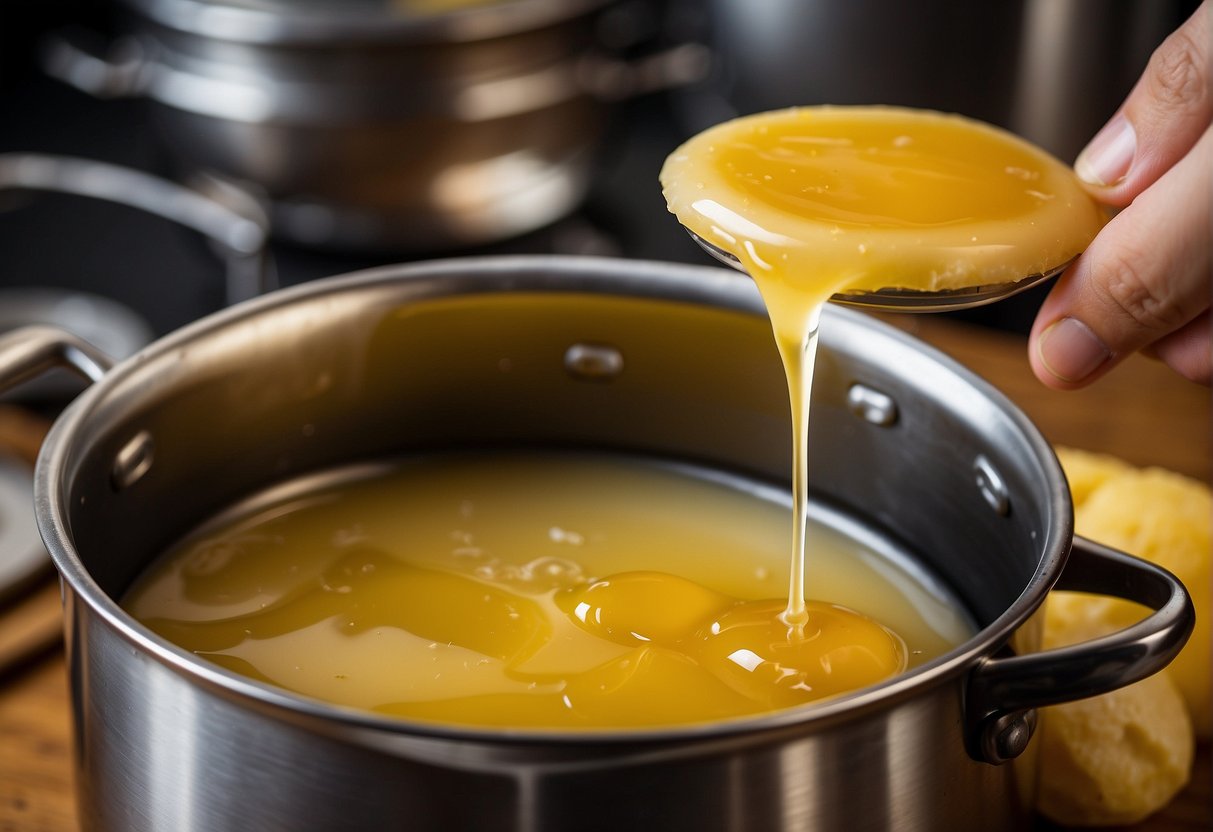
Creating your own lip balm combines the natural benefits of beeswax and coconut oil to nourish and protect your lips. We'll guide you through crafting a classic recipe, personalizing it with flavors and tints, and enhancing it with additional healing properties.
Classic Beeswax and Coconut Oil Recipe
Ingredients:
- 2 tablespoons beeswax
- 2 tablespoons coconut oil
- 1 tablespoon shea butter
Instructions:
- Melt the beeswax, coconut oil, and shea butter in a double boiler, stirring continuously.
- Once melted, remove from heat and pour the mixture into clean lip balm tubes or tins.
- Allow to cool completely before capping the tubes or tins.
Customizing Flavors and Tints
Flavor Options:
- Peppermint essential oil
- Lemon essential oil
- Tangerine essential oil
- Grapefruit essential oil
Adding Tint:
- For a light tint, add 1/8 teaspoon of your favorite lipstick to the mixture during melting.
Instructions:
- Add 5-10 drops of essential oil per ounce of balm for flavor.
- If using, incorporate tint during the melting process, stirring until well blended.
Adding Healing and Sun Protective Elements
Healing Additions:
- Add 1 teaspoon of Vitamin E oil as an antioxidant.
- Include 1/2 teaspoon of honey for its natural healing properties.
Sun Protection:
- Mix in non-nano zinc oxide powder for natural SPF protection. Use 1 teaspoon for SPF 15, adjusting the amount for higher protection if desired.
Instructions:
- Stir in the healing additions or zinc oxide just before pouring the balm into containers.
- Ensure thorough mixing to evenly distribute the healing and protective elements.
Packaging and Storage Solutions
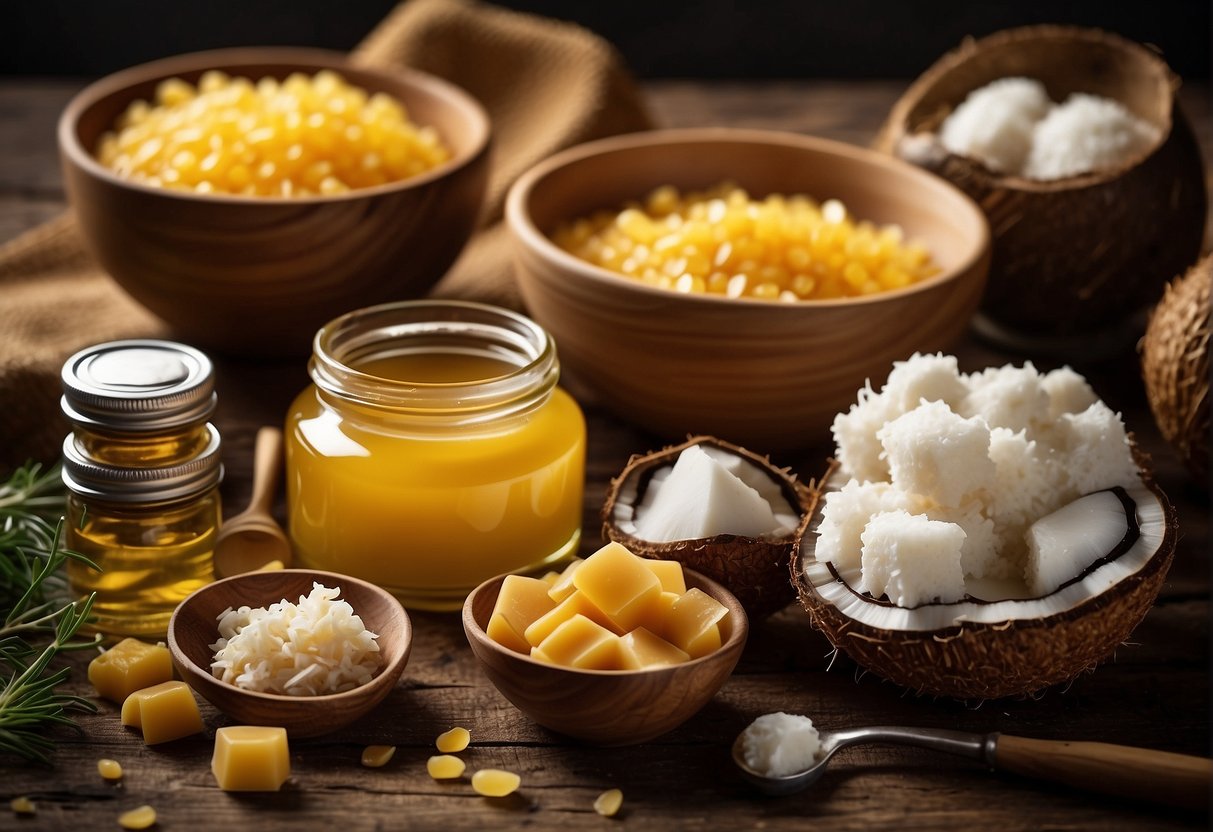
Packaging and storage are crucial for maintaining the integrity of lip balm made with beeswax and coconut oil. We'll explore the best practices for selecting containers and ensuring the longevity of the product.
Choosing the Right Containers
When deciding on lip balm containers, we prioritize materials that will protect the product from contamination while also being user-friendly. Lip balm tubes are a popular choice due to their convenience for application and portability. For those who prefer pots or tins, it's essential to ensure that they have a secure closure to prevent spills. We recommend using clear or labeled containers that allow the user to identify the product easily, and that align with the aesthetic of our beauty products.
Ensuring Longevity and Freshness
To maximize shelf life, we incorporate an appropriate preservative into our lip balm formulation, which helps maintain freshness. Furthermore, storing the product in a cool, dry place is vital; exposure to heat can cause the coconut oil and beeswax to melt, compromising the consistency of the balm. We recommend wrapping batches of lip balm containers in paper towels secured with a rubber band to absorb any condensation, which could affect the labels or the product itself. It's important to remember that natural ingredients in lip balms can limit their shelf life compared to synthetic alternatives, so proper storage becomes even more critical.
Creative Ideas for Personal Use and Gifting
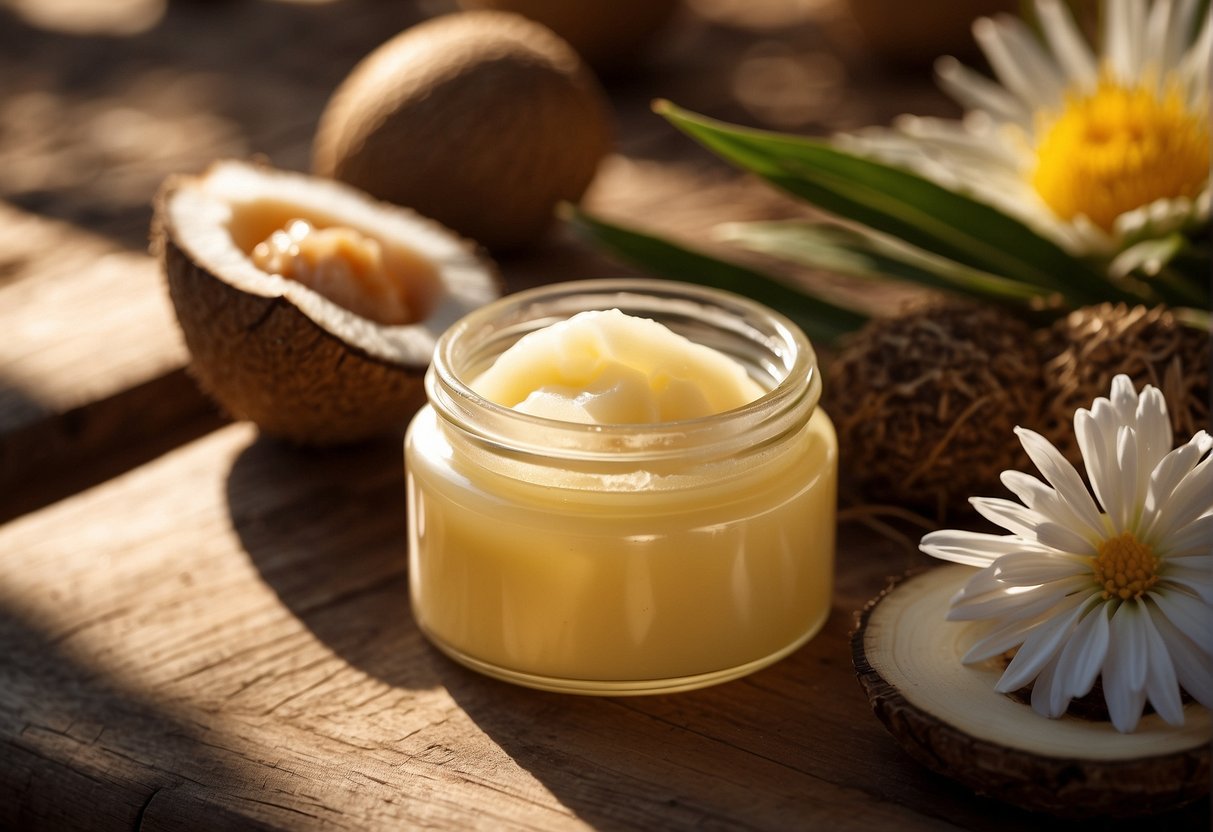
Crafting homemade lip balm with beeswax and coconut oil presents an opportunity to create personal and thoughtful gifts. We focus on two special aspects: designing custom labels and packaging, and concocting themed and seasonal gifts.
Designing Custom Labels and Packaging
Creating custom labels for our DIY lip balm provides a personal touch and enhances the overall aesthetic. We can use vibrant graphics or simple designs to reflect the lip balm’s ingredients, like jojoba oil, lavender, or peppermint oil. It's important to remember potential allergies when listing ingredients on the label. Packaging can range from eco-friendly tins to elegant glass containers, allowing for various expressions of creativity.
Themed and Seasonal Lip Balm Gifts
Our natural homemade lip balm also serves as a versatile gift for different occasions and seasons. For instance, a winter-themed lip balm can include vanilla extract or peppermint oil for a festive touch, while a spring variant might feature lavender or mango butter for a fresh scent and feel. We use quality ingredients like beetroot powder for natural color, ensuring a finished product that's both organic and gentle. For an extra touch of care, we can craft lip gloss or body butter to complement the lip balm, making a complete homemade beauty set.
Frequently Asked Questions
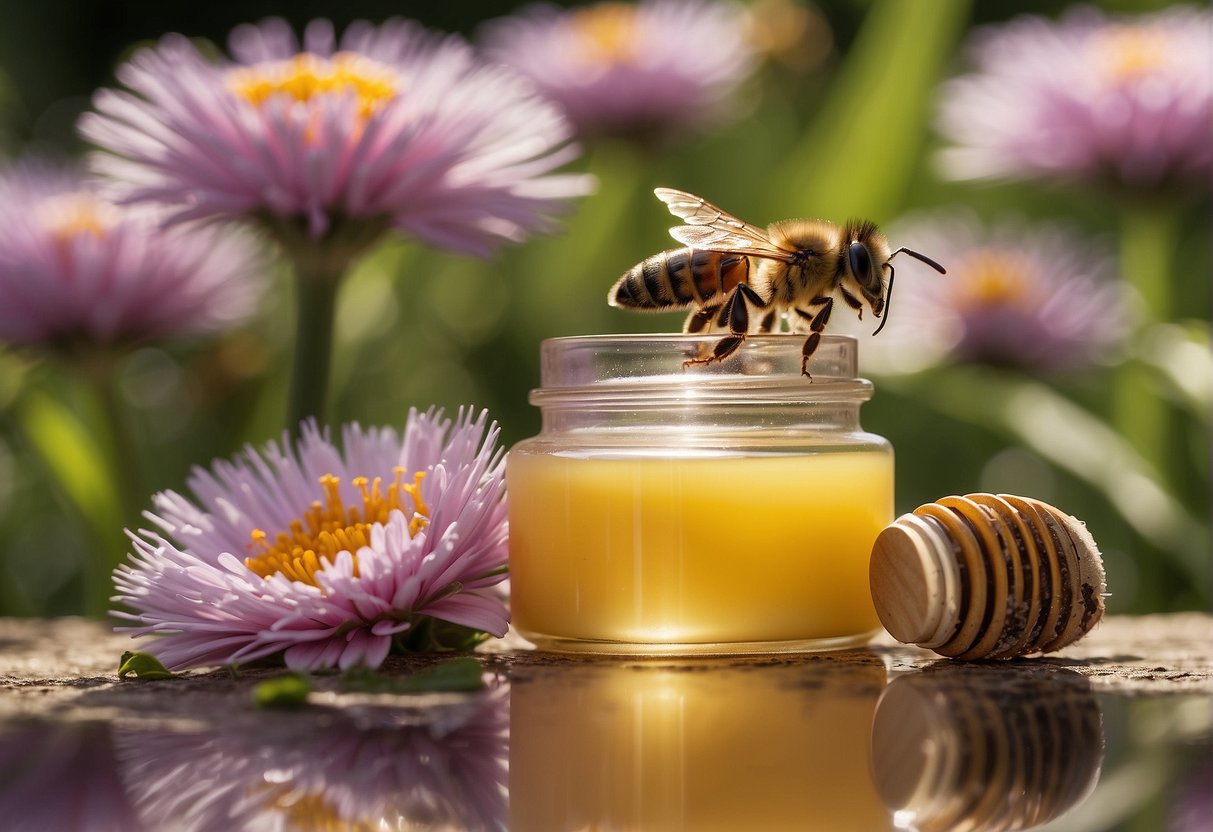
In this section, we aim to clarify common queries about crafting lip balm using beeswax and coconut oil, enhancing it with essential oils, the inclusion of additional natural ingredients, and considerations when making this product for sale.
What is the process for creating lip balm using beeswax and coconut oil?
To create lip balm, we first melt beeswax and coconut oil together. Once melted, the mixture is removed from the heat, allowing us to add other ingredients like essential oils or honey before pouring it into containers to solidify.
Which essential oils are best to add to a homemade lip balm recipe?
For lip balm, we recommend using essential oils known for their skin benefits, such as peppermint for a cooling sensation, lavender for its soothing properties, or sweet orange for a cheerful fragrance. It is important to use them sparingly and to ensure they are skin-safe.
Can I create an effective lip balm using only coconut oil?
Yes, you can create a simple lip balm with just coconut oil. Its natural moisturizing properties can nourish the lips, but for better texture and longer-lasting effect, we advise mixing it with beeswax, which helps to harden the balm and lock in moisture.
What should I know about making and selling homemade lip balm?
When making and selling homemade lip balm, it's crucial for us to understand the legal requirements of selling cosmetics, such as proper labeling, using safe ingredients, and following good manufacturing practices to ensure the product is safe for public use.
How can honey be incorporated into a DIY lip balm recipe?
Honey can be easily added to the lip balm formulation after melting the beeswax and coconut oil together. We stir in a small amount of honey until it's well incorporated before the mixture cools, offering additional moisturizing benefits and a sweet scent.
What are the benefits of including shea butter in a beeswax lip balm?
Including shea butter in a beeswax lip balm formulation provides an extra layer of moisture and richness. Shea butter is renowned for its emollient properties, giving the lip balm its smooth glide and enhanced skin-repairing benefits, making it an excellent choice for dry or chapped lips.